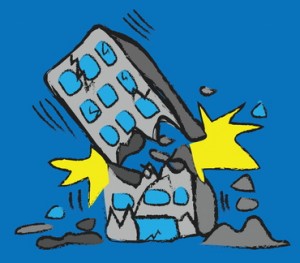If you’ve gotten involved as a landlord or tenant with non-residential real estate, such as retail or office buildings, then you have probably encountered a phenomenon that may go by any of several names: expense recoveries, expense reimbursements, pass-throughs, or common area maintenance (CAM) charges. What exactly is this phenomenon and how does it work?
The typical commercial lease will specify a base rent, sometimes as a dollar amount per month or year, but more often as an annual number of dollars per rentable square foot of space occupied by the tenant. Many leases also call for additional rent over the base amount in the form of expense reimbursements.

How it Works—The Math
Let’s take a simple example. Say that you own a single-tenant property with 10,000 rentable square feet. The lease specifies a base rent of $30 per square foot. It also says that the tenant must reimburse you, the landlord, for all property taxes in excess of $4,000 per year. The $4,000 cut-off is called an expense stop.
In the first year of the lease, the total property tax bill is $12,000. How much will the tenant pay during the first year? Start with the base rent:
area x rate = base rent
10,000 square feet x $30 per sf = $300,000 base rent
Now calculate the reimbursement:
property tax expense — expense stop = expense reimbursement
$12,000 — $4,000 = $8,000 expense reimbursement
So the tenant is going to pay a total of $308,000 in the first year.
What happens if the space is divided among multiple tenants? While the leases for these tenants could be structured in any way to which the parties agree, the most common arrangement would be to allocate the reimbursements according to each tenant’s pro-rata share of the total rentable square footage.
Let’s say now that instead of occupying the entire rentable area, the tenant we’ve been discussing takes up only 2,000 square feet and the remainder is rented to other businesses. The calculation of the base rent works just as it did before (area x rate = base rent), but the reimbursement involves an additional factor: the tenant’s pro rata share.
Since the tenant occupies 2,000 of the 10,000 square feet total, its share is 20%.
pro rata share x (property tax expense — expense stop)
= expense reimbursement
20% x ($12,000 — $4,000) = expense reimbursement
20% x $8,000 = $1,600 expense reimbursement
As before, we add that to the tenant’s base rent.
2,000 square feet x $30 per sf = $60,000 base rent
to get a total of $61,600.
In this example, we have been passing through just one expense, but the landlord and tenant can agree to pass through as many or as few as they like. Property tax is probably the most common, and a lease that has just that single reimbursement is called a net lease. If the lease passes through both taxes and insurance, it is called a net-net lease. And if it adds tenant responsibility for repairs and maintenance into the deal, we call it a triple-net lease.

How it Works—The Practical Issues
All this is nice in theory, but how does it work in practice? Does the property owner let the tenant pay the bills?
Hardly ever, and for good reason. If you as a property owner pass property taxes or insurance cost – or any other expense for which you are responsible – on to a tenant, what you should do is pay those expenses directly yourself and send your tenant a bill for the reimbursable amount.
A moment’s reflection will make the reason for this immediately obvious. Do you really want to rely on a third party to pay your tax or insurance bill on time? What if they don’t? You’re probably already picturing the nightmare scenario, where the insurance bill was left unpaid by the tenant, and then a catastrophic uninsured loss occurred. Or the tax bill was ignored, and you end up with a lien against your property and a black mark on your credit. If it’s your bill, pay it yourself and then collect from the tenant.
More…
Now that we’ve nailed down the basic mechanics of expense reimbursements, we want to go a bit further. There are some variations we should look at, like base-year reimbursements and CAM charges; there are some accounting and presentation issues worth considering; and there is the fundamental question as to why commercial landlords and tenants follow this pass-through practice at all. Come back for Part 2 to find out more.
The information presented in this article represents the opinions of the author and does not necessarily reflect the opinions of RealData® Inc. The material contained in articles that appear on realdata.com is not intended to provide legal, tax or other professional advice or to substitute for proper professional advice and/or due diligence. We urge you to consult an attorney, CPA or other appropriate professional before taking any action in regard to matters discussed in any article or posting. The posting of any article and of any link back to the author and/or the author’s company does not constitute an endorsement or recommendation of the author’s products or services.
Mastering Real Estate Investing
Learn how real estate developers and rehabbers evaluate potential projects. Real estate expert Frank Gallinelli — Ivy-League professor, best-selling author, and founder of RealData Software — teaches in-depth video courses, where you’ll develop the skills and confidence to evaluate investment property opportunities for maximum profit.